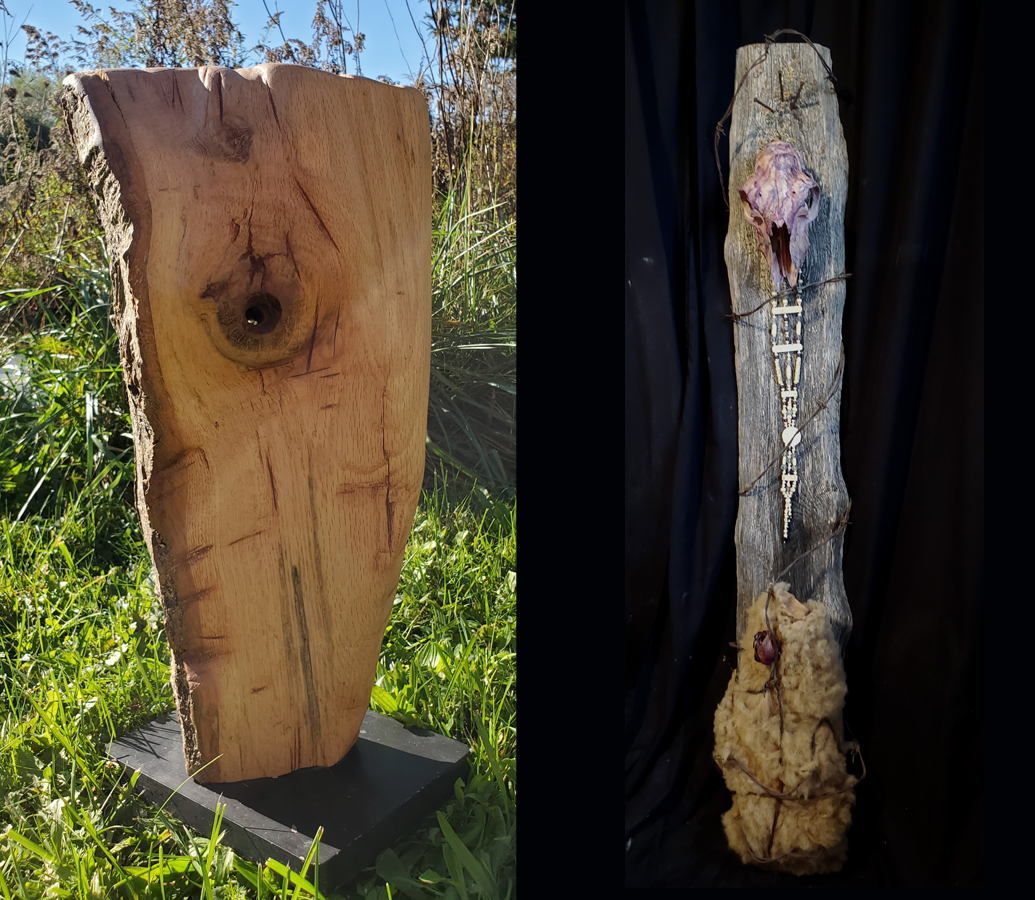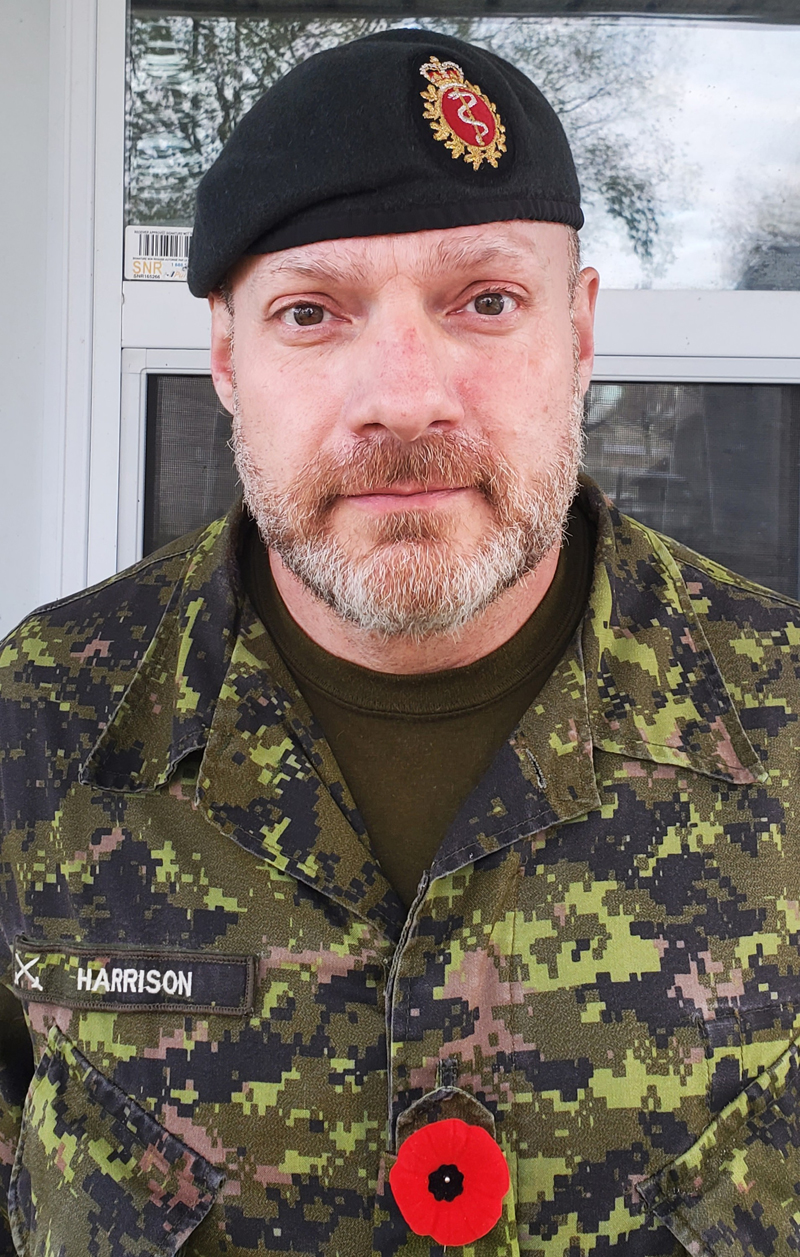Sculptor's work celebrates ancient virtues of soldiering
By Lookout on Nov 09, 2021 with Comments 0
Peter Mallett
Staff Writer
––
For artist Allan Harrison, the three-dimensional art of sculpting strengthens the connection between the natural world and humankind.
By using wood or clay, elements found in nature, he creates effigies to that relationship, one that goes back to ancient times often revealed through devotional icons.
“For me, sculpture is the most effective way I can communicate the concept of getting back to the fundamental relationship of mankind with the natural world.”
Harrison, 54, was a former army medic for 17 years, before remustered as an Officer Cadet to become a Physician Assistant. He is currently training at CFB Borden. When a work crew chopped down a 200-year-old Oak tree near the base to make way for hydro lines, Harrison managed to haul away a large piece of the tree trunk and began paring it down in his backyard.
“To gain something, you must first sacrifice something,” he says of the Oak tree that would become Wounded Warrior 1: Sacrifice.
With hand chisels and sandpaper, he created a slender sculpture inspired by the ancient Standing Stones of Stenness located near Orkney, Scotland.
The stones were created in the Neolithic age and believed to be one of the oldest henges in the British Isles.
One of its most famous giant standing forms has a hole in it, which Harrison says was named by Scandinavian settlers as a tribute to Norse god Odin who sacrificed one of his eyes in exchange for gaining wisdom.
That hole is replicated in his wooden sculpture and the theme is a warrior’s sacrifice.
Like many artists, he excelled in art and sculpture in high school, but left it for other career aspirations. Creativity was never far away, and he developed his passion at the University of Guelph Fine Arts department when he met and studied under John Fillion, award-winning Canadian sculptor, and Fine Arts professor.
“He built the foundations of my artistic process – working with tools and techniques for modelling, carving, and casting clay and stone, and developing the vision, technical execution, and integrity to make art that is meaningful to me.”
The two remained friends after graduation until Fillion’s death in 2019. Harrison was also mentored by Bhutanese sculptor Tshewang Dorje, known for his use of clay and fibres to create stable, hollow sculptures with intricate detail.
Wounded Warrior 2, a figurative clay sculpture, was a representation of Norse god Tyr. He sacrificed his hand to bind the monstrous wolf Fenrir, who threatened to destroy the world as he grew in size and power.
Following its exhibition at the Steel Spirit Gallery in Borden, Ont., the sculpture was stored in Harrison’s backyard and later ravaged by his Australian Shepherd dog, Anwenn.
“I didn’t attempt to salvage it. My sculpture prof and mentor, John Fillion, always taught me that artwork could be of value without needing to be treated as precious; that clay sculpture ultimately was only mud after all.”
A fitting end to a sculpture that connects nature to the living and the past.
––––
Filed Under: Top Stories
About the Author:







